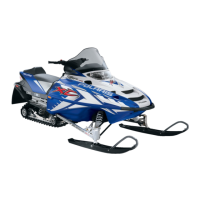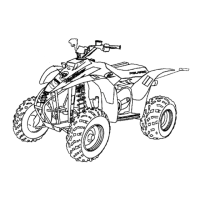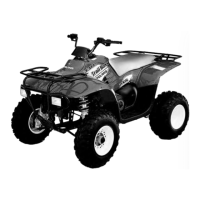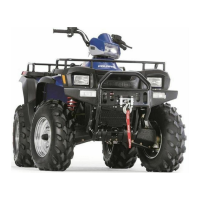13.3
ELECTRICAL
MULTIMETER
MULTI METER USEAGE
The easiest and most accurate method for testing modern
electrical components is with a digital multitester. Any good
quality multitester will work. However, due to ease of
operation and durability, Polaris recommends the Fluke Model
73 (PN 2870659), or Tektronix DMM155. See photo at right.
This instrument will provide a digital readout of the measured
value of the test being performed.
Please see your Multimeter Owners Manual for operation.
IGNITION TIMING (Carburetor
units)
IGNITION TIMING
NOTE: Always verify timing of engine at room
temperature (68
_
F / 20
_
C) only, and at the proper
RPM. If applicable make sure the key switch is in the
PREMIUM mode and the TPS is unplugged.
To obtain the best ignition timing accuracy and reduce the
chance of error, the ignition timing specification is given at a
flat" portion of the advance curve. This flat portion on the
curve is where the base ignition timing is specified. Refer to
the specification chapter for model specific timing
specification. Ignition timing must be checked at the specified
RPM, or an inaccurate timing will result.
If engine damage has occurred due to a suspected ignition
related problem, verify the ignition timing is correct at the
specified operating RPM.
TIMING PROCEDURE (Carburetor units)
1. Refer to the timing specification charts at the beginning of
this section to determine the proper ignition timing for the
engine you are working on.
2. Use a dial indicator to place the piston in the proper timing
position and mark the flywheel at this point (follow
procedure outlined in this chapter).
3. Connect an accurate tachometer and a good quality timing
light to the engine according to manufacturer's
instructions. Disconnect the TPS (Throttle Position
Sensor) connector from carburetors on models with TPS.
4. Start engine and increase RPM to the point specified in the
timing specifications in Chapter 1. Hold the throttle to
maintain specified timing RPM.
5. Point the timing light at the timing inspection hole.
6. With your head positioned so there is a straight line
between your eye, the stationary pointer and the crankshaft
center line, note the relative position between the marked
flywheel line and the stationary pointer. If the stationary
pointer is aligned with the mark made in Step 2, (or within
the acceptable + variance) the timing is correct.
7. If the pointer is outside the variance, the stator will have to
be rotated either with crankshaft rotation (to retard the
timing) or against rotation to advance it.
NOTE: Rotate stator plate approximately the same
distance as the marks must move. In most cases, the
recoil starter housing, recoil drive hub, and flywheel
must be removed to loosen the stator bolts and
change the timing. On some engines, the stator plate
retaining screws can be accessed through the
flywheel.
8. Torque stator plate screws and flywheel nut to specified
torque. Apply Loctite 262 (red) to crankshaft flywheel
taper if required. Refer to the Specifications section for
torque specifications and flywheel installation procedure
for engine type.
TIMING CHART (Carburetor units)
If the ignition timing specification is listed in degrees only,
convert to either inches or mm BTDC and use a dial indicator
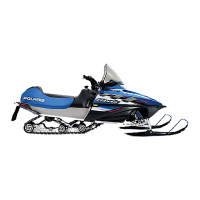
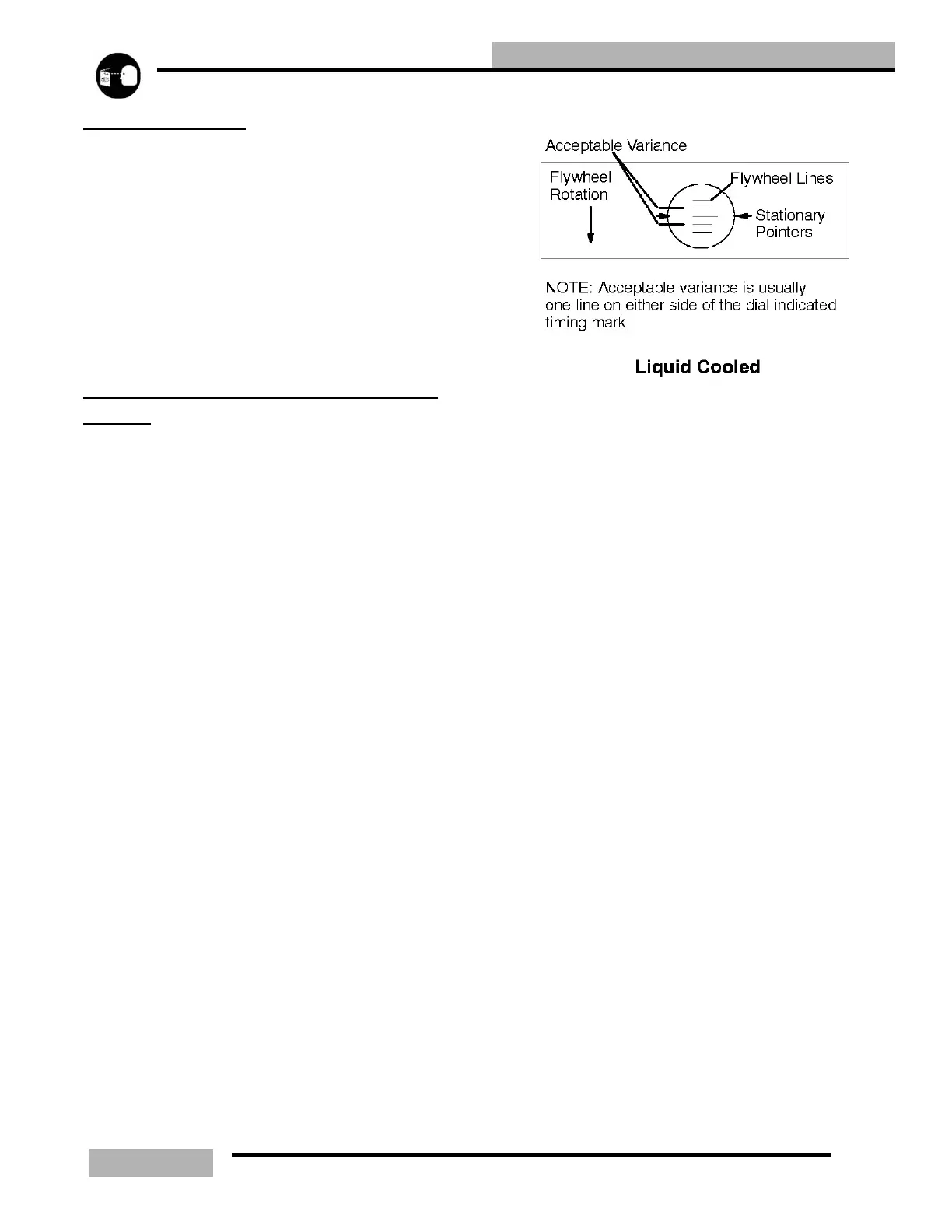